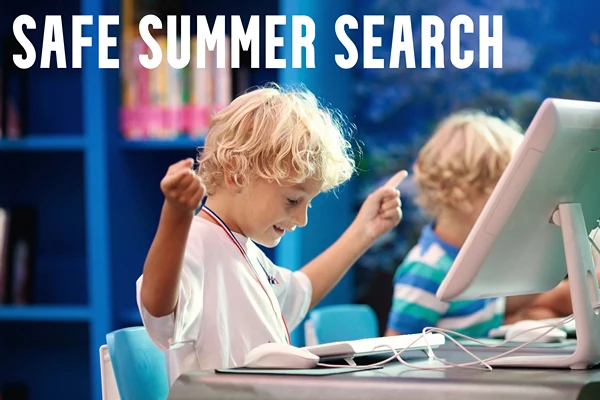How Much Screen Time Is Too Much For a Distance Learner?
There has been a major shift in the world towards distance learning. The discussion of how much time kids can safely spend looking at screens has only become more vital. Whether it be on smartphone, tablet or laptop, parents have usually been concerned with the time kids spend playing games, interacting on social media, or watching TV shows and movies.
Even in a normal world you would also need to add the screen time spent on school computers used for a variety of purposes. These activities include searching Google and doing research. All of these online activities add up to a staggering number of hours per day looking at screens. And now we must also take into account the time spent doing online school.
85% of parents worry about the amount of time their kids are spending online these days.
Recommended Screen Times
The WHO & CDC both recommend no more than 2 hours of screen time for children under 18. Finding further specifics, The American Academy for Pediatrics urges a 1-hour screen time maximum for children under 6 years old.
Furthermore, it has been found that children under 2, who regularly watch at least 1 hour of television on a daily basis, may face an increased risk of cognitive, language, and motor delays.
Blue Light Affects
An interesting consideration about screens, in particular, is their emission of what’s referred to as “blue light”. Blue light is particularly influential because it blocks a hormone that your body makes called melatonin. When you are exposed to blue light waves, especially in the evening, melatonin is not produced, so your body isn’t getting that vital message about slowing down and getting ready for sleep. If your child continues surfing the ‘net on a tablet or smartphone after getting into bed, they could be telling their body to rise and shine, rather than slow down and rest.
Luckily, if you’re concerned about the impact additional screen time may be having on your child, there are steps in preparation for bedtime you can take to help limit your child’s blue light exposure.
Home Learning Challenges
With home learning comes more indoor time. However, this makes it especially easy to develop a screen addiction. Did you know excessive screen time can be toxic to our mental health? 56% of teens feel anxious or lonely without their phone.
Yet, distance learning sessions last more than our government recommends we spend on screens altogether – even with compelling data proving its potential to be mentally and physically dangerous. The problem is only exasperated when you consider that students use screens to access other content as well, such as entertainment and social media.
Ask Yourself How Your Kids are Doing:
- How often are your kids exercising, whether indoors or out?
- How social have they been since distance learning began?
The value of education should never be downplayed, but please double check to ensure distance learning isn’t taking a toll on your little ones.
In the meantime, check out the infographic below. It may help you shape a better understanding of how much screen time is too much for your children.
Screen Time Infographic
This infographic explores the good, the bad, and necessary use on screens due to online learning. It explores the risk associated with screen time use in spite of the need for them for the distant learner.
It also offers tips on how to get the best out of the necessary hours needed to be in front of a screen so that the time online can be reduced.
Finally, the infographic shows ways to protect kids against harmful content while on the internet.
Tips for Managing Screen Time in a Balance Manner
Set clear boundaries: Establish designated screen-free times during the day to rest your eyes and mind.
Follow the 20-20-20 rule: Every 20 minutes, look away from the screen at something 20 feet away for at least 20 seconds to reduce eye strain.
Break up study sessions: Divide study sessions into manageable chunks with breaks in between to prevent mental fatigue.
Utilize offline resources: Balance screen time by using physical books, printed materials, or offline activities for learning whenever possible.
Prioritize quality over quantity: Focus on productive screen time activities such as attending live classes, participating in discussions, and completing assignments rather than aimless browsing.
Engage in physical activities: Incorporate regular exercise or outdoor activities into your schedule to counterbalance sedentary screen time.
Monitor and adjust: Pay attention to how much time you spend on screens daily and make adjustments as needed to maintain a healthy balance between screen time and other activities.






